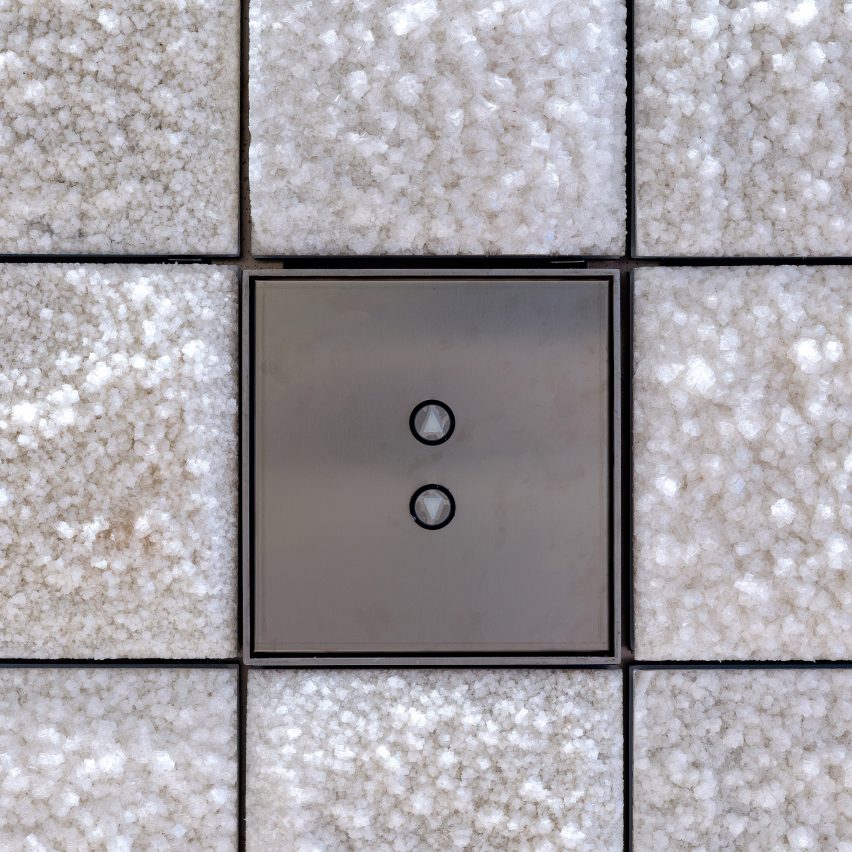Salt panels made using "only sun and wind" used to clad interior of Frank Gehry's Arles tower

Natural materials produced from local salt, sunflowers and algae have been used on the interior of Frank Gehry's tower for Luma Foundation in Arles to lower its carbon footprint.
Lift lobbies have been clad in thousands of salt panels produced in the ancient salt flats in the nearby Camargue nature reserve as part of a project that saw Gehry's studio cede responsibility for interior finishes to a local team.
However, details of the building's carbon footprint have not been disclosed. The team did not submit the building for environmental certification under the voluntary French HQE programme.
"We fit into [the environmental agenda]," the Canadian-American told Dezeen. "But I can't explain it." "I respond to every fucking detail of the time we're in with the people we live with, in this place," said the 92-year-old when asked about the building's environmental performance.
Carbon revolution
This article is part of Dezeen's carbon revolution series, which explores how this miracle material could be removed from the atmosphere and put to use on earth. Read all the content at: www.dezeen.com/carbon.
The sky photograph used in the carbon revolution graphic is by Taylor van Riper via Unsplash.
The post Salt panels made using "only sun and wind" used to clad interior of Frank Gehry's Arles tower appeared first on Dezeen.
...
| -------------------------------- |
| CÓMO INSTALAR CIELO RASO EN P. V. C. Tutoriales de arquitectura. |
|
|
Villa M by Pierattelli Architetture Modernizes 1950s Florence Estate
31-10-2024 07:22 - (
Architecture )
Kent Avenue Penthouse Merges Industrial and Minimalist Styles
31-10-2024 07:22 - (
Architecture )






